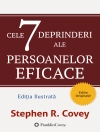A thoroughly revised edition of the classic resource for understanding gender differences in the classroom
In this profoundly significant book, author Michael Gurian has revised and updated his groundbreaking book that clearly demonstrated how the distinction in hard-wiring and socialized gender differences affects how boys and girls learn. Gurian presents a proven method to educate our children based on brain science, neurological development, and chemical and hormonal disparities. The innovations presented in this book were applied in the classroom and proven successful, with dramatic improvements in test scores, during a two-year study that Gurian and his colleagues conducted in six Missouri school districts.
- Explores the inherent differences between the developmental neuroscience of boys and girls
- Reveals how the brain learns
- Explains when same sex classrooms are appropriate, and when they’re not
This edition includes new information on a wealth of topics including how to design the ultimate classroom for kids in elementary, secondary, middle, and high school.
Innehållsförteckning
Acknowledgments xv
Introduction 1
Who We Are and What We Do 2
How to Use This New Edition 5
Success Stories Since the Missouri Pilot 6
Innovating with Single-Sex Options 8
Moving Forward at the Nexus of Science and Practice 9
1 Part One How Boys and Girls Learn Differently 11
How the Brain Learns: Inherent Differences Between Boys and Girls 13
The Wide Spectrum of Gender in the Brain 15
How the Brain Works 17
How Boys’ and Girls’ Minds Are Different 19
Developmental and Structural Differences 25
Chemical Differences 27
Hormonal Differences 27
Functional Differences 29
Differences in Processing Emotion 31
2 Why the Brains Are Different 37
A Brief History of Brain Difference 38
The Role of Hormones in the Womb and at Puberty 40
How Brain-based Differences Affect Boys and Girls 43
Areas of Learning-Style Difference 44
Deductive and Inductive Reasoning 44
Abstract and Concrete Reasoning 45
Use of Language 45
Logic and Evidence 46
The Likelihood of Boredom 46
Use of Space 47
Movement 47
Sensitivity and Group Dynamics 47
Use of Symbolism 49
Use of Learning Teams 49
Learning Differences and the Intelligences 50
Time and Sequence 50
Space and Place 51
Applying the Intelligences to Brain-Based Gender Difference 52
The State of Boys and Girls in Our Schools 54
Advantages for Boys, Challenges for Girls 54
Advantages for Girls, Challenges for Boys 56
Applying Brain-Based Research to Gender Advantage 57
Studies Based on Political Assumptions 64
The Political Search for Workplace Privation 66
Creating the Ultimate Classroom 67
Part Two Creating the Ultimate Classroom for Both Boys and Girls 71
Authors’ Note 72
3 The Ultimate Preschool and Kindergarten Classroom 75
The Foundation of Early Learning: Bonding and Attachment 76
Handling Children’s Emotional Stress 78
Bonding and Attachment Solutions 80
Day Care, Preschool, and Kindergarten Community Building 86
The Case for Preschool 86
Parents as Teachers 87
The Parent Education Coordinator 88
Nutrition and Learning 89
Carbohydrates, Proteins, and the School Day 89
Fatty Acids 91
Dealing with Aggressive Behavior 92
Aggression Nurturance 95
Increasing Empathy Nurturance and Verbalization 96
Discipline Techniques 99
The Outdoor Classroom 101
Directing Boys and Girls to Academic Excellence 103
Teaching Math and Spatials 105
Language Development 113
Special Education 117
Creating a Tribe: Bonding and School-Home Alliances 118
Use of Psychotropic Medications 119
The Ultimate Preschool and Kindergarten Classroom for Both Boys and Girls 123
For the Boys 123
For the Girls 124
Tips for Parents 125
4 The Ultimate Elementary School Classroom 127
Structural Innovations 129
Use of School Time 130
Class Size, Number of Teachers, and Teacher-to-Student Ratio 133
Using Group Dynamics and Group Work as a Basis of Pedagogy 135
Use of Computers and Other Media in Elementary School 137
The Outdoor Classroom 139
Bonding and Attachment in Elementary Learning 142
Handling Students’ Emotional Stress 149
The Role of the Mentor 155
Community Collaboration: Mentors from Outside the School 158
How to Provide Discipline in the Elementary Classroom 160
Learning from Past Mistakes 161
Discipline Techniques After an Offending Act 163
Discipline Techniques to Prevent Undisciplined Behavior 168
Motivation Techniques 170
Character Education 171
CHARACTERplus 172
Integrating Character Education into the Whole School 173
Dealing with Cruelty, Hazing, and Violence 174
Definition of Terms 175
Zero-Tolerance Policies 176
Innovations for Academic Excellence 180
Innovations for Teaching Language Arts, Especially Reading and Writing 180
Innovations for Teaching Math and Science 184
Standardized Testing 189
Special Education, Learning Disabilities, and Behavioral Disabilities 191
Class Within a Class 193
Fast For Word 195
Other Spatial Stimulants and Use of Movement 195
The Multisensory Approach to Reading Problems 196
Cooperative and Competitive Learning 196
Sports and Athletics 199
The Ultimate Elementary Classroom for Both Boys and Girls 200
For the Boys 200
For the Girls 201
Tips for Parents 203
5 The Ultimate Middle School Classroom 204
Structural Innovations 206
Single-Sex Education 206
Rites of Passage 215
Use of Uniforms 218
Classroom Size and Other Innovations 220
Bonding and Attachment 222
The Early Adolescent’s Drop in Self-Esteem 223
Handling Students’ Emotional Stresses 225
Community Collaboration 231
How to Provide Discipline in the Middle School Classroom 234
Strategies for Providing Discipline 234
Mandatory Sports 238
Character Education 240
Innovations for Teaching Language Arts and Math and Science 243
Innovations for Teaching Language Arts 243
Innovations for Teaching Math and Science 247
Girls and Computer Science 249
Special Education 250
Rethinking Special Education Through the Lens of Gender and the Brain 252
Innovations for Dealing with Behavioral Elements of Special Ed 255
The Underachiever as a Special Ed Category 257
“Mr. Daba”: The Power of Bonding 258
The Ultimate Middle School Classroom for Both Boys and Girls 261
For the Boys 262
For the Girls 263
Tips for Parents 263
6 The Ultimate High School Classroom 266
Bonding and Attachment 268
Communication and Conflict Resolution 270
The Art of Mentoring 272
Peer Leadership, Not Peer Pressure 274
Discipline Systems 275
Character Education and Service Projects 277
Structural Innovations 278
Class and School Size 279
Uniforms 280
Time and Time-of-Day Innovations 284
The Innovations Students Are Asking For 286
Counterinnovations 287
Rites of Passage 289
Full Psychosocial Education, Not Just Sex Education 291
Improving Sex Education 292
Gender Education 294
Innovations to Improve Academic Learning 297
Teaching Mathematics, Science, and Technology 298
Technology and Gender 301
Teaching Reading and Literacy 302
Standardized Testing 307
Special Education 310
The Ultimate High School Classroom for Both Boys and Girls 313
For the Boys 313
For the Girls 314
Tips for Parents 315
What High School Students Are Saying: Their Fears 316
Epilogue 319
Notes 323
Parents’ Book Study for Boys and Girls Learn Differently! 333
Teachers’ Book Study for Boys and Girls Learn Differently! 341
The Gurian Institute 349
About the Authors 351
Index 355
Om författaren
Michael Gurian is a pioneer and leading authority in gender issues worldwide. The New York Times best-selling author of The Wonder of Boys, The Minds of Boys, The Purpose of Boys, and The Wonder of Girls, he is cofounder of the Gurian Institute, an active research and training organization in the fields of education, family development, and gender studies. Kathy Stevens is executive director of the Gurian Institute and coauthor of five books with Michael, including The Minds of Boys.












